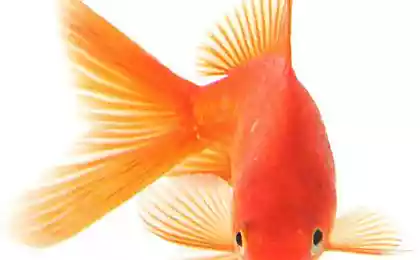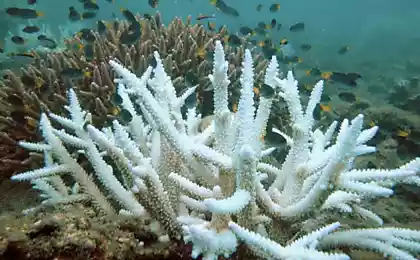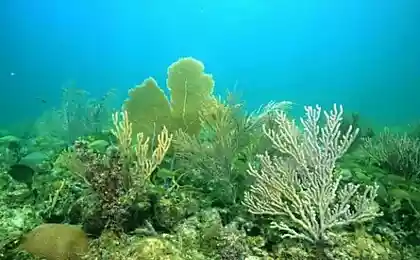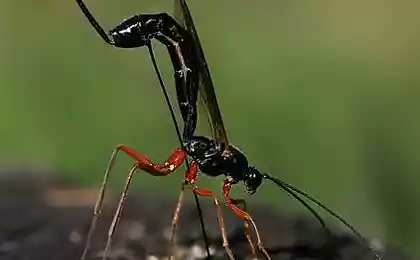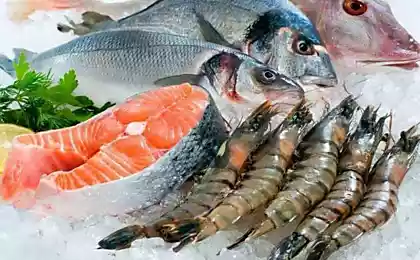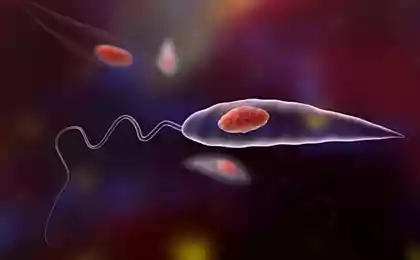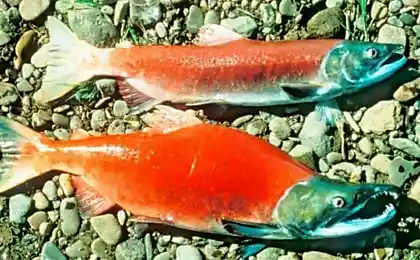571
Coral larvae can smell the difference between healthy and damaged reefs
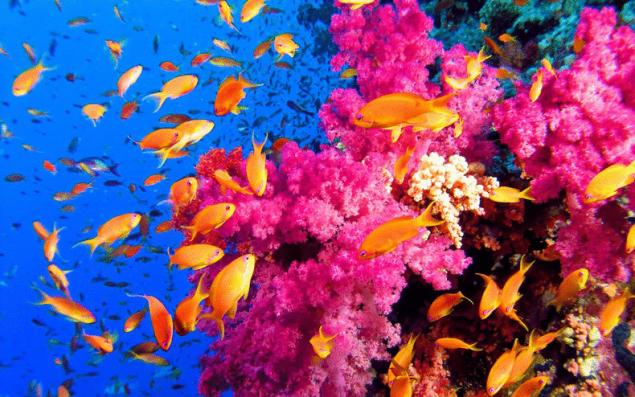
Certain corals and fish can smell bad areas and use that ability to avoid settlement in the damaged reefs.
Damaged coral reefs emit chemical signals that repel young coral and fish, discouraging them from settling in the degraded habitat, according to a new study. The work shows for the first time that coral larvae can smell the difference between healthy and damaged reefs when deciding where to live.
Coral reefs are reduced around the world. Overfishing is one of the reasons for the collapse of coral – it is depleting populations of herbivorous fish, cleaning algae, which grow in the damaged reefs. Once the reef is overgrown with algae, there may come a tipping point when the growth of corals will be suppressed, and the new corals will settle there rarely.
A new study shows how chemical signals from seaweed repel young coral to settle in areas dominated by algae. Young fish are also not attracted to the smell of water from a damaged reef. The findings suggest that coral reefs with depleted fish populations marine protected areas may not be enough to help these reefs recover because chemical signals continue to scare away new fish and coral long after overfishing stopped.
"If you are organizing a marine protected area to ensure the colonization of degraded habitats, this check may not happen if young fish and corals do not recognize the degraded area as habitat," says Daniel Dixon, associate Professor in the School of Biology Georgia Institute of Technology in Atlanta and the main author of the study.
The new study considered three offshore areas of Fiji that had adjacent areas of fishing. The country has established no fishing areas to protect its healthy habitats and to allow damaged reefs to recover over time.
Young corals and fish otpugivat chemical signals affected by overfishing, overgrown with seaweed reefs but attracted to cues from areas dominated by corals, and fishing is prohibited. Larvae of coral and fish prefer certain chemical cues from species of coral that are indicators of a healthy environment, and avoid certain algae, which are indicators of degraded habitats.
The study for the first time tested coral larvae method that has been used previously to study the reactions of fish, and found that young corals confidently prefer the smell of healthy reefs.
"Corals are not only "sniff" smelling good areas, avoiding bad – they also understand the intricacies," says mark hay, Professor School of biology Georgia Institute of Technology and senior author of the study. "They make careful decisions and can say, "to settle or not to settle".
The study showed that young fish have a strong preference for water from healthy reefs. The researchers have collected water from healthy and degraded habitats in the chute, allowing the fish to choose to swim one or the other stream of water. The researchers tested the preferences of 20 fish each from 15 different species and found that regardless of species, family or trophic group, each of the 15 species showed up to eight times greater preference for water from healthy areas.
The researchers then tested coral larvae from three different species and found that they preferred water from the healthy environment five times more often than water from degraded habitats.
Chemical cues from corals also swayed the fishes ' preferences, the study said. The researchers soaked different corals in water and studied the behavior in this water fish, a catch chemical signals from the coral. The signals from the common coral Acropora nasuta enhance the attraction to water of degraded habitats up to three times for all 15 tested fish. The same preference was found among the coral larvae.
The corals Acropora easily fade, very vulnerable to competition with algae and suffer from other stress situations. Data show that chemical signals from these corals are attractive to fish and corals because they are basically in a healthy habitat. Chemical signals from hardy corals that can grow even in overfished environments were less attractive to juvenile fish or corals.
The researchers also soaked seaweed in water and tested in the water preferences of fish and coral. Cues from the common seaweed Sargassum polycystum, which can bloom and capture coral reef, reduced the attractiveness of water to fish by up to 86 percent compared to water without the chemical signals from the seaweed. Chemical signals from seaweed reduced the attractiveness of water for larval corals to 81 percent.
"Corals avoided that smell more than even algae that are chemically toxic to corals, but not in bloom," says Dixon.
Future work will include the removal of plots of seaweed from damaged reefs and studying the impact of such actions on the recovery of the reefs.
Minimal intervention at the right time and the right place can stimulate the recovery of overfished reefs, hay said. It might attract the fish back into these areas for settlement and eating the algae around the coral. The corals then become more, as they would not be overgrown with algae. But the big corals will become more attractive to more fish.
"This means that we probably need to manage these reefs in ways that help to get rid of the harmful algae – and then contribute to the development of the most attractive corals," says hay.
Source: ecowars.tv/
Hydraulic power station for charging smartphones and tablets
Big change— 5 recipes for school Lunches



